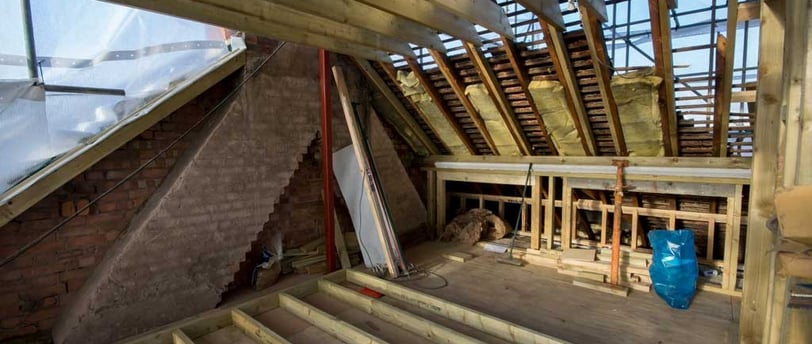Loft Conversion Structural Calculations UK (2025 Guide) | Costs, Process & Rules
5/6/20252 min read


Structural Calculations for Loft Conversions in the UK: What You Must Know in 2025
Planning a loft conversion in 2025? One of the most crucial, and often misunderstood, aspects of this process is the need for structural calculations. Whether you're adding a simple rooflight or building a full-scale dormer, your project won't get far without these essential documents.
In this comprehensive guide, we break down what structural calculations are, why they matter, and how to ensure your loft conversion complies with UK Building Regulations and remains safe, legal, and cost-effective.
What Are Structural Calculations?
Structural calculations are detailed engineering assessments that show how your loft conversion will support loads such as the roof, floors, walls, and furniture. These calculations ensure that the existing structure of your house can safely bear the additional weight from the new loft space.
They're carried out by a qualified structural engineer and form part of your submission to Building Control.
Why Are Structural Calculations Needed for Loft Conversions?
In the UK, building regulations (especially Part A: Structure) require that all building work, including loft conversions, be structurally sound.
Structural calculations are needed to:
Prove the safety of new joists, beams, and supports
Prevent sagging ceilings, roof collapses, or structural instability
Design load paths that account for new walls, bathrooms, and stairs
Support planning applications and Building Control approval
Avoid delays, rebuilds, or costly structural failures later on
Whether you’re building a rear dormer in London or converting a Victorian terraced loft in Manchester, structural calculations are not optional—they're mandatory.
What’s Included in Structural Calculations for a Loft?
A structural engineer will provide the following:
1. Load Calculations
Dead loads (materials, flooring, roof)
Live loads (furniture, occupants, snow/wind load on the roof)
Point loads (stairs, water tanks, partitions)
2. Joist Sizing and Positioning
Floor joist spans, depth, and spacing
Ceiling joist alterations
Timber or steel beam specifications
3. Steel Beam (RSJ) Specifications
Size, load-bearing capacity, and placement
Padstone or wall support design
4. Roof Support & Rafter Adjustments
Removal or trimming of existing roof members
Strengthening of rafters or collars
5. Foundations Check (if needed)
For hip-to-gable or mansard lofts that load onto external walls
6. Staircase Openings & Load Paths
Modifications to floor for stairwell
Transfer of loads to avoid overloading lower floors
Who Can Provide Structural Calculations?
Only a qualified structural engineer (usually Chartered – MIStructE or MICE) can legally provide structural calculations.
You can:
Hire a freelance structural engineer
Use an architectural design and build firm with engineers on staff
Instruct a loft conversion company that partners with engineers
🔎 Tip: Always ask if their calculations are compliant with Eurocodes or British Standards and if they are insured for professional indemnity.
Do Structural Calculations Need to Be Submitted to Building Control?
Yes. Along with your loft design drawings, you must submit structural calculations to Building Control either as
Part of a Full Plans Application, or
As backup documents during site inspections
Local councils or private approved inspectors will review and verify these calculations before issuing a Completion Certificate.
How Much Do Structural Calculations Cost in the UK?
Typical UK costs for structural calculations in 2025:
Velux Loft £500–£700
Rear Dormer £700–£000
Hip-to-Gable £900–£1200
Mansard Conversion £1200–£1500
Prices may vary based on property size, location, and complexity.
Final Thoughts: Safety First, Always
Your loft conversion may be your dream space—but without sound structural design, it can become a nightmare. Structural calculations aren’t just a technicality—they’re the blueprint for safety, stability, and compliance.
Hire a qualified structural engineer, get your calculations submitted early, and enjoy a stress-free loft build in 2025 that meets both your vision and UK regulations.
